If you love strawberries as much as I do, why not try growing some of these luscious berries yourself? The hardest part is deciding what kind of strawberries to grow. Here are the four types of strawberry varieties.
The strawberries were outstanding this year where I live. They were a little late ripening but it was worth the wait. If you love strawberries as much as I do why not try growing some of these luscious berries yourself? It isn’t terribly hard to do; they just need a spot in full sun that has good, well drained soil. The hardest part is deciding what kind of strawberries to grow.
Spring is the best time for planting your new strawberry patch but day-neutral varieties can be planted in the fall and they will be ready to produce the next season. Depending on when they bear fruit, strawberries are divided into four types:
- June-bearing plants produce one large harvest in early summer and send out many runners with baby plants. Mother plants last about 3 years and can be replaced by rooting the runners.
- Day-neutrals are a type of strawberry that is not sensitive to day length (which is what triggers fruiting in other strawberries.) They produce berries every 6 weeks from June through October and will even set fruit on unrooted runners, making them perfect for hanging baskets or strawberry jars. They may not do well in southern states so check with your local extension service for the varieties they recommend for your area.
- Ever-bearing plants produce large berries in June and again in the fall. They send out fewer runners than June-bearers. These cultivars are being replaced by the day neutrals in many parts of the country.
- Alpines produce small berries all season long, send out no runners, and are long-lived.
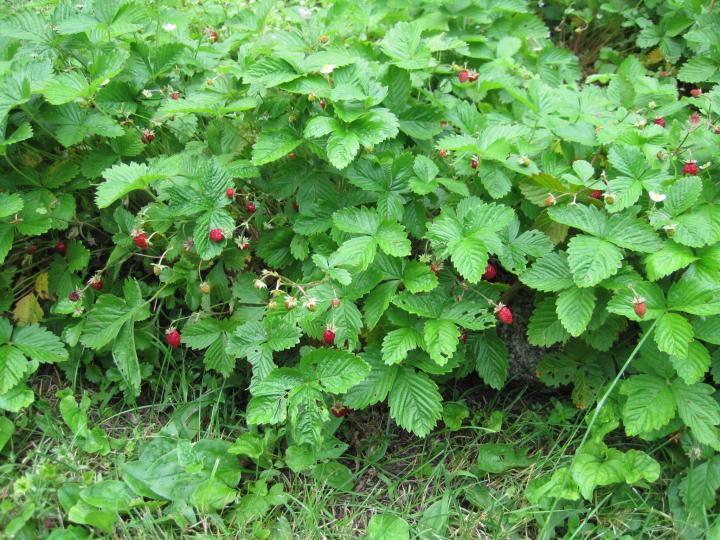
Since they are so well-behaved, strawberries can be integrated into ornamental gardens as edging plants. To propagate them, you must divide an established clump or start new plants from seed.
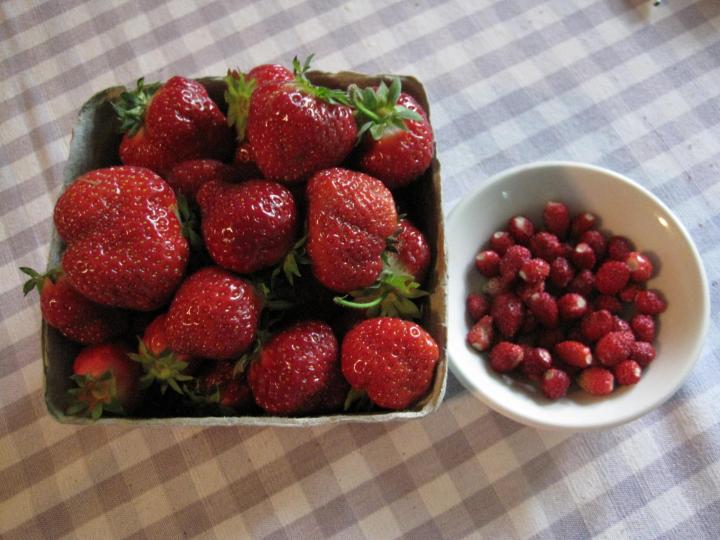
June-bearers on the left compared with tiny alpine berries on right.
Preparing the Strawberry Bed
Be sure to prepare the soil for your new strawberry bed well in advance of planting. Remove all the weeds you can. Dig in plenty of aged manure or compost. Strawberries are difficult to weed and since they are shallowly rooted they don’t compete well for moisture and nutrients. Mulch will help to keep down the weeds, conserve moisture and protect the ripening berries from rotting.
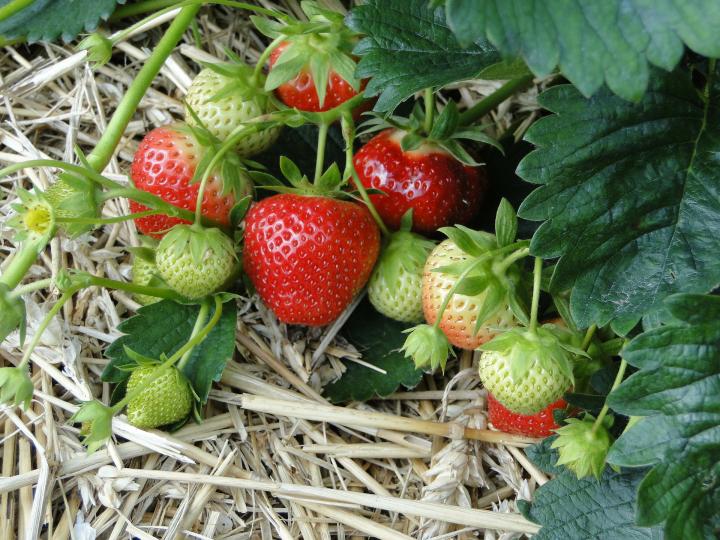
Straw is the classic mulch for strawberries but weed-free salt marsh hay or pine needles work just as well.
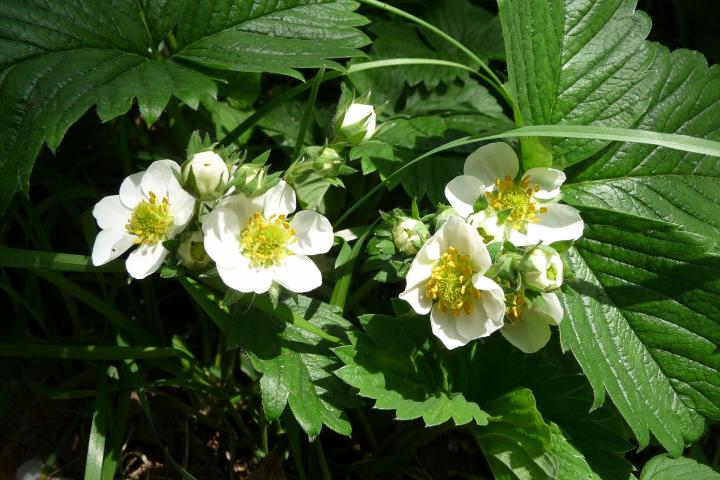
Remove all flowers from June-bearing plants the first year to encourage plant and runner growth. With day-neutrals, remove only the first flower clusters and let the later flowers set fruit.
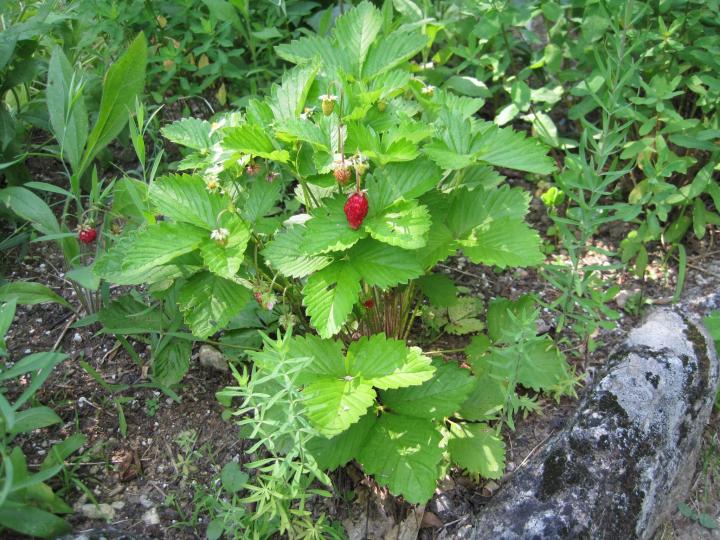
Alpines grown from seed and planted out in the spring will bear fruit later in the summer.
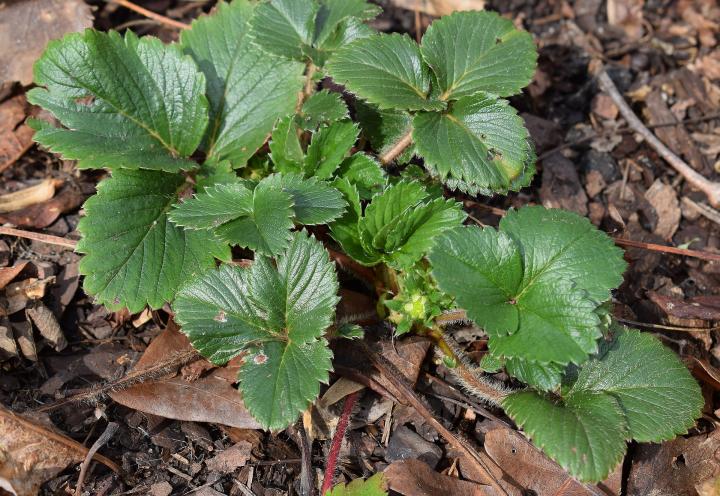
Fertilize your June-bearing plants in the fall when they are developing next year’s fruit buds. Fertilizing them in spring encourages excessive plant growth at the expense of fruit production. The more leaves on a plant in the fall, the more berries you’ll have next spring.
Fertilize day-neutrals and ever-bearers when the leaves first appear in the spring and after each flush of fruit.
Strawberries are a quick way to incorporate fruit into your edible landscape while you wait for those fruit trees to bear, so prepare a spot for some plants this fall or next spring and add some sweetness to your life!
For more strawberry gardening information. see the Almanac’s Strawberry Plant Page.
Comments